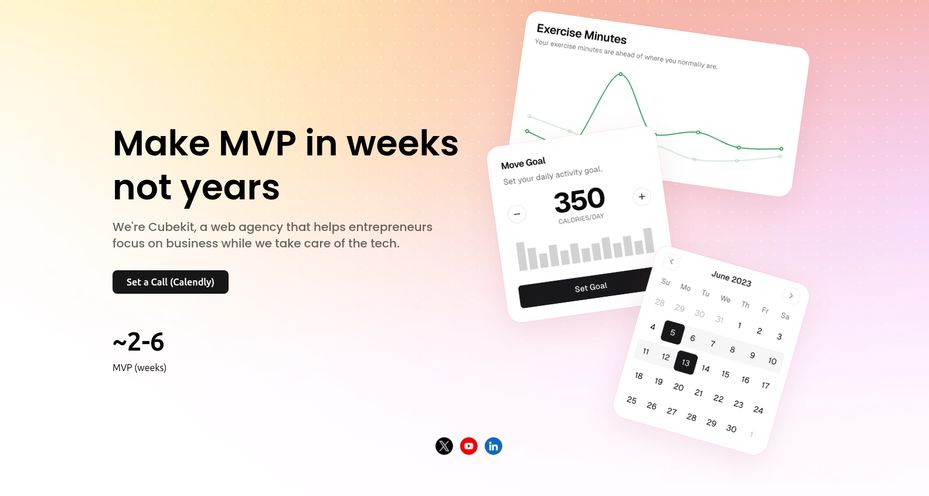We’ve all been there. You land on a website, a little chat bubble pops up, and you think, “Great, maybe I can get a quick answer.” Five minutes later, you’re in a circular conversation with a bot that can only say, “I’m sorry, I don’t understand that.” It’s frustrating. It’s a terrible user experience. And frankly, it makes me want to close the tab and never come back.
As someone who’s spent years neck-deep in traffic generation and user engagement metrics, I can tell you that a bad chatbot is worse than no chatbot at all. It promises help and delivers a headache. So, when I hear about a new tool that claims to offer “human-like engagement,” my ears perk up, but my skepticism meter goes way up too.
The latest one to cross my desk is called Almo. It’s an AI-powered chatbot that makes a pretty bold claim: it simplifies your customer support by engaging with visitors just like a real person would. So, is it just another cog in the machine, or could this actually be the solution we’ve been waiting for? Let’s take a look.
What Exactly is This Almo Thing, Anyway?
At its core, Almo isn’t just a simple, pre-programmed bot with a few canned responses. That’s the old way of doing things. Instead, Almo is designed to be a learning machine. You feed it your content—your website pages, your help docs, your product descriptions, your PDFs, you name it—and it ingests all of it.
Think of it like this: instead of hiring a new support agent and spending weeks training them, you’re hiring an AI that reads and understands your entire knowledge base in minutes. It becomes a specialist on your business, ready to answer questions with the information you’ve already created. This is the key difference. It’s not pulling generic answers from the web; it's using your own words, your own data, and your own brand voice to talk to your customers. That’s a pretty compelling idea.

Visit Almo
The Features That Actually Matter
Okay, let's cut through the marketing fluff. A feature is only useful if it solves a real problem. Here’s what Almo brings to the table and why it might be worth your attention.
It’s More Than a Script, It’s an AI Brain
The main event is its AI-powered query resolution. This means it’s not just looking for keywords like “shipping” or “return.” It’s built to understand the intent behind the question. A customer asking, “How long until my package gets here?” and another asking, “What are your delivery times?” are essentially asking the same thing. A smart AI like Almo should be able to connect those dots and provide the same, correct answer, drawn directly from your shipping policy page.
Your Hardest Working Employee
The 24/7 availability is a massive benefit, especially for small teams. Your customers aren't just shopping or browsing from 9 to 5. They’re up at 3 AM wondering if that jacket comes in blue. Almo doesn't sleep, doesn't take coffee breaks, and doesn't ask for holidays off. It’s always there, providing instant answers. This kind of instant gratification is huge for customer satisfaction and can be the difference between a sale and an abandoned cart.
Human-Like Conversation (Or as Close as We Can Get)
This is the holy grail for chatbots. Almo aims for a more natural, conversational flow. By training on your own content, it can adopt your tone. If your brand is quirky and fun, it can reflect that. If you're more formal and corporate, it can do that too. This consistency is crucial for maintaining a coherent brand experience across all touchpoints.
The Good, The Bad, and The AI: A Candid Look at Almo
No tool is perfect. Let's get real about where Almo likely shines and where you might hit some bumps in the road.
The Big Wins
The most obvious advantage is the potential to drastically reduce your customer support workload. Imagine your support team’s inbox. How many of those emails are the same questions over and over? “What’s your refund policy?” “Do you ship to Canada?” “How do I reset my password?” Almo is designed to be the first line of defense, handling 80% of these repetitive queries. This frees up your human agents to focus on the complex, nuanced, high-touch issues where their skills are truly needed. That’s not just a time-saver; it’s a morale booster and a much smarter allocation of resources.
This directly leads to improved customer satisfaction. In a world of instant everything, nobody wants to wait 24-48 hours for an email response to a simple question. An instant, accurate answer from Almo can turn a moment of potential frustration into a positive brand interaction. Happy customers are more likely to convert and more likely to come back.
The Reality Checks
Now, for the other side of the coin. The documentation mentions that it may not be able to handle complex or nuanced queries. This is an important limitation to accept. This AI is not a human. It won’t be able to solve a customer's multi-part problem that involves their specific order history, a billing dispute, and a personal preference. The goal here isn't to replace your support team, but to augment them. A good implementation should always have a clear and easy way for the user to say, “I need to talk to a person.”
There's also the fact that it requires initial training on your content. This isn't a plug-and-play magic box. You have to feed it the right information. Garbage in, garbage out, as they say. If your help documentation is outdated or your website content is unclear, the chatbot's answers will be too. So, there’s some upfront work involved in curating and cleaning up your knowledge base. Think of it as a one-time investment for a long-term payoff.
Finally, the notes say, “Deployment may be paused temporarily.” This is a bit vague, but it could mean a few things—perhaps for retraining the model with new content or during major system updates. It's just something to be aware of.
Let's Talk Money: The Almo Pricing Mystery
Here’s the part where I’d normally break down the pricing tiers for you. But, as of this writing, Almo doesn’t have a public pricing page. In the SaaS world, this usually points to a custom pricing model. This means they likely tailor a plan based on factors like your website traffic, the number of customer interactions, or the specific features you need.
Don't let that scare you off. Sometimes, this is better than a rigid, one-size-fits-all plan. It means you can have a conversation and get a quote that actually matches your needs. My advice? If you’re interested, reach out to them directly. It’s the only way you’ll know for sure what the investment looks like.
Who Is Almo Actually For?
So, who should be seriously considering this?
In my opinion, Almo seems like a perfect fit for a few key groups. E-commerce stores are the most obvious one. They get hammered with repetitive questions about shipping, returns, product specs, and stock availability. Automating this is a no-brainer. SaaS companies could also benefit immensely by using it to answer feature questions or guide users through basic setup processes. Even large content creators or publishers could use it to help readers find specific articles or information within a vast archive.
If you find your team answering the same 10-20 questions all day, every day, you are the target audience for a tool like Almo.
Frequently Asked Questions about Almo
How does Almo learn my website content?
Almo is trained by providing it with your existing content. You can typically point it to your website URL, and it will crawl your pages, or you can upload documents like help guides, FAQs, and product manuals. The AI then processes this information to build its knowledge base for answering customer questions.
What happens if Almo can't answer a customer's question?
This is a critical point. A well-designed chatbot system should have a clear escalation path. If Almo recognizes it cannot answer a query or if the user explicitly asks to speak with a human, it should seamlessly hand off the conversation to a live agent via live chat, email, or a support ticket system.
Is Almo difficult to set up on my website?
While the initial content training requires some effort, the technical implementation for most modern chatbots is quite simple. It usually involves adding a small snippet of JavaScript code to your website's header or footer, similar to how you would install Google Analytics. Most platforms provide clear instructions for this.
Is there a free trial for Almo?
Since Almo's pricing isn't publicly listed, information about a free trial is also not readily available. Companies with custom pricing models often offer personalized demos or sometimes a limited trial upon request after an initial consultation call. Your best bet is to contact their sales team directly.
So, Is Almo the Future of Customer Support?
Look, AI chatbots are not going to completely replace your skilled human support team anytime soon. And that’s a good thing. But tools like Almo represent a smart evolution. They are about efficiency and allocation. It's about letting the bots handle the boring, repetitive stuff so your human experts can handle the real challenges.
From what I can see, Almo is a promising contender in this space, especially with its focus on training directly from your own content. It’s a step in the right direction away from those rigid, frustrating bots of the past. If you’re drowning in support tickets and looking for a lifeline, it's definitely worth investigating. It might just be the quiet, efficient team member you've been looking for.
Reference and Sources
- For general information on AI Chatbots in customer service: Forbes Advisor - Best AI Chatbots For Customer Service
- To learn more about Almo, you would typically visit their official website (URL not provided).



